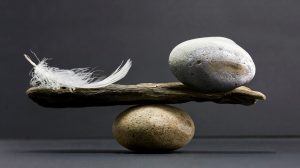Knee Osteoarthritis (KOA)
Osteoarthritis (OA) stands as one of the prevailing chronic and degenerative maladies affecting cartilage, particularly prevalent among the elderly populace, with a notable predilection towards women. It is a common condition of the musculoskeletal system that can occur in any joint such as the upper limbs or spine, but it is mainly observed in large joints of the lower extremities, such as the hip and knee. These weight-bearing joints bear the brunt of loading activities, which require smooth, successful completion and absorption of loads or vibrations. Moreover, the progression of OA involves the gradual deterioration and depletion of articular cartilage concurrent with osteophyte development, synovial membrane inflammation, and hypochondriac bone destruction. Clinical manifestations include pain, stiffness, swelling, joint deformities, and functional impairment, with advanced stages potentially leading to muscular atrophy, further compromising the quality of life for afflicted individuals. OA is also among the diseases with the highest rate of comorbidity, which include: cardiovascular diseases, diabetes, obesity, chronic obstructive pulmonary disease (COPD), chronic pain and even depression (de Rooij et al., 2014).

Research by Tsokanos et al. (2021) has indicated that therapeutic treatments such as manual therapy (MT) and exercise contributes positively toward the treatment of patients suffering from KOA by reducing pain and increasing functionality. In addition, Nejati et al. (2015) had previously shown that performing exercise while also receiving MT for the knee showed significant positive effects that lasted up to a year.


Manual therapy encompasses a variety of hands-on techniques performed by trained healthcare practitioners to diagnose, treat, and manage musculoskeletal and neuromuscular conditions. Some common manual therapy techniques include:
- Joint Mobilization: This technique involves the passive movement of a joint within its natural range of motion. It aims to improve joint mobility, reduce pain, and restore function. Joint mobilization is often applied to the spine or extremity joints.
- Soft Tissue Massage: Massage therapy involves the manipulation of soft tissues, including muscles, tendons, and ligaments. Various techniques such as effleurage, petrissage, and deep tissue massage are employed to enhance blood circulation, reduce muscle tension, and promote relaxation.
- Myofascial Release: This technique focuses on the fascia, a connective tissue that surrounds muscles, bones, and organs. Practitioners use sustained pressure to release tension and tightness in the fascial system, promoting improved mobility and reducing pain.
- Trigger Point Therapy: Trigger points are localized areas of muscle tightness and tenderness. Therapists apply pressure to these points to release tension and alleviate pain. This technique is often incorporated into massage or manual therapy sessions.
- Strain-Counterstrain: Also known as positional release, this technique involves placing the body or a specific joint in a position of minimal strain, allowing muscles to relax and pain to diminish. It is particularly useful for treating muscle spasms and acute pain.
- Stretching Techniques: Manual therapists use various stretching methods to improve flexibility, enhance range of motion, and alleviate muscle tightness. This may include static stretching, dynamic stretching, and proprioceptive neuromuscular facilitation (PNF) stretching.
- Neural Tissue Mobilization: This technique focuses on mobilizing and releasing tension in the neural structures, such as nerves and nerve roots. It aims to address conditions involving nerve compression or irritation, such as sciatica.
As part of a comprehensive approach to managing musculoskeletal disorders and promoting overall well-being, myotherapists here at HBM may employ these techniques, among others, to treat KOA.
Listed below are some details of a client dealing with KOA who is seeking treatment here at HBM, which may also serve as a case study:
Age: 70+
Gender: F
Symptoms: Pain and swelling in both knees (particularly in right), with apprehension and restriction fully bending and straightening knees out.
Medical history: Recent scans showing severe OA of R knee, no previous surgery to lower limbs.
Lifestyle: Retired but still active. Walks at least 10k steps/day, and goes for aquarobics class daily.
The client has to date received 2x treatments here at HBM in the span of a month and noted an improvement in pain and functionality. After the second treatment she mentions how the treatment has given her hope for managing her knee pain again.
If you or someone you know are dealing with KOA, book in an appointment to see us now for an initial consultation so we can assess your condition and come up with an appropriate and tailored treatment plan to manage your pain.
Simply click this booking link for the myotherapy initial consultation with our experienced myotherapist Jerry Song.




 “What’s the difference between Myotherapy and Remedial Massage?” It’s a common question asked by clients on weekly base if not on daily base. Fair enough given that most clients aren’t even aware of the difference of relaxation massage and remedial massage. Please click the linkage to see our related blog.
“What’s the difference between Myotherapy and Remedial Massage?” It’s a common question asked by clients on weekly base if not on daily base. Fair enough given that most clients aren’t even aware of the difference of relaxation massage and remedial massage. Please click the linkage to see our related blog. It’s winter time, quite cold in Melbourne. To have a remedial massage with Hot Stone is perfect option for pampering your body and mind. In our practice, we use hot stone frequently not limited for relaxation massage, also for deep tissue and remedial massage. Adding heated stones to a massage therapy session, hot stone massage promotes deeper muscle relaxation, and warmth that provides a great way to unwind from the stresses of daily life, especially on a cold day.
It’s winter time, quite cold in Melbourne. To have a remedial massage with Hot Stone is perfect option for pampering your body and mind. In our practice, we use hot stone frequently not limited for relaxation massage, also for deep tissue and remedial massage. Adding heated stones to a massage therapy session, hot stone massage promotes deeper muscle relaxation, and warmth that provides a great way to unwind from the stresses of daily life, especially on a cold day. At Holistic Balance Myotherapy, we strongly believe in natural therapy. Our body has an incredible self-healing function, but long-term negligence can kill that sense slowly. Cupping is one of the most common techniques we use on a daily basis to help clients with stiff muscles and pain relief. Here’s some basic knowledge about cupping.
At Holistic Balance Myotherapy, we strongly believe in natural therapy. Our body has an incredible self-healing function, but long-term negligence can kill that sense slowly. Cupping is one of the most common techniques we use on a daily basis to help clients with stiff muscles and pain relief. Here’s some basic knowledge about cupping. Micheal Phelps’s cupping marks drew the attention of many audiences during the Olympic games. Cupping is also favoured by many other athletes and celebrities like Jennifer Aniston, Gwenyth Paltrow and Victoria Beckham, to name a few. But really, cupping isn’t something for Olympians or celebrities only.
Micheal Phelps’s cupping marks drew the attention of many audiences during the Olympic games. Cupping is also favoured by many other athletes and celebrities like Jennifer Aniston, Gwenyth Paltrow and Victoria Beckham, to name a few. But really, cupping isn’t something for Olympians or celebrities only. Bruising is caused by impact trauma leading to the breakage of capillaries and a reactionary rush of fluids to the damaged location from the tissue injury. There is no compression in cup therapy. The marks are the result of having internal unwanted toxins pulled up to the skin, which can include such things as lactic acid, lymph fluid, stagnant blood, or medications. When a condition exists within a deeper muscle layer and is dredged up during treatment, discolouring will appear on the skin. If there’s no gunk, there are no marks.
Bruising is caused by impact trauma leading to the breakage of capillaries and a reactionary rush of fluids to the damaged location from the tissue injury. There is no compression in cup therapy. The marks are the result of having internal unwanted toxins pulled up to the skin, which can include such things as lactic acid, lymph fluid, stagnant blood, or medications. When a condition exists within a deeper muscle layer and is dredged up during treatment, discolouring will appear on the skin. If there’s no gunk, there are no marks. Many of us take our body for granted and lack of care and maintenance. When they feel like a massage, they have little knowledge about different types of massage and couldn’t decide whether need a remedial massage or simply a refreshing and stress reducing relaxation session. Here’s some explanation about the difference of relaxation massage and remedial massage, to help you decide which one to go for.
Many of us take our body for granted and lack of care and maintenance. When they feel like a massage, they have little knowledge about different types of massage and couldn’t decide whether need a remedial massage or simply a refreshing and stress reducing relaxation session. Here’s some explanation about the difference of relaxation massage and remedial massage, to help you decide which one to go for. 1) Food: the body’s fuel
1) Food: the body’s fuel
